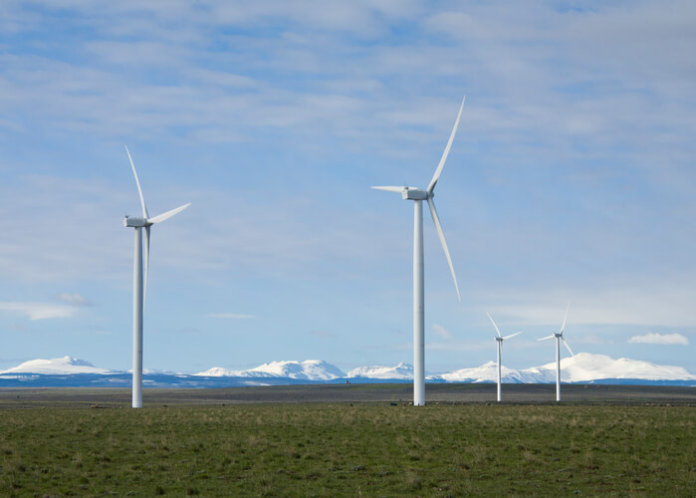A new analysis of state taxation policies regarding wind energy in the West shows New Mexico is the lowest-cost state for wind farm development, followed by Montana, Colorado and Wyoming.
The study, released by the University of Wyoming’s (UW) Center for Energy Economics and Public Policy, takes into account wind resource estimates, construction and labor costs, and tax policies. It concludes that those four states have a significant advantage over other Western states regarding the cost of wind development.
However, the difference between the cost of development between New Mexico and Wyoming is 10%, the study says, and that gap would grow to 21% if Wyoming were to raise its wind generation tax from $1/MWh to $5/MWh, as some legislators have proposed.
According to UW, the research is intended to provide policymakers with information on the potential economic development and tax revenue trade-offs associated with wind development.
“Communities have grappled with trying to decide whether to welcome large-scale wind development and whether to reduce its tax burden in an effort to competitively attract projects, or to take advantage of such development as it occurs to tax it, either to compensate for the local costs wind facilities impose or to supplement local, county and state revenues – especially in regions where traditional revenue sources have been declining,” wrote the authors, UW economists Rob Godby and Ben Cook. “It is important to understand the capital, operating and tax structure of wind developments to appreciate how, for a given tax revenue or incentive change, different cost consequences may occur that affect the attractiveness of a state to wind development.”
According to the study, Wyoming is the only state that taxes generation of wind energy, but wind developers pay a number of taxes in Western states, including business, property and sales taxes. Taxes paid by wind energy companies, taking into account incentives, range from $1.57/MWh in Colorado to $5.34/MWh in Washington.
Taking into account Wyoming’s potential wind generation given modern technology, as well as the existing taxes in Wyoming, wind energy companies building new facilities in the state may be expected to pay as little as $3.05/MWh in taxes, the study shows.
Existing wind facilities using technology in 2008-2010 – when most facilities in the state were built – currently pay an estimated tax burden of closer to $4.05/MWh. Increasing the wind generation tax to $5/MWh, as has recently been proposed, would more than double the total tax load to $6.62/MWh at new facilities and raise the tax burden to over $7.77/MWh at existing facilities, making the tax burden in Wyoming the highest of all Western states, the study says.
“Our conclusion is that this cost change could have a significant negative impact on wind developers’ willingness to consider Wyoming and undermine the potential use of wind development as an economic diversification strategy,” the economists wrote.
Noting the fixed nature of a wind production tax – which causes the tax burden on the overall cost of wind development to increase as the cost of wind energy production declines – they suggest Wyoming consider moving to taxes assessed on a percentage basis, such as income, gross receipts, and property and sales taxes.
Another problem, the economists note, is the state’s reliance on a sales tax assessed on wind equipment in Wyoming, even though most other industries choosing to locate in Wyoming would be exempt from such a tax. This raises the cost of development in the state. The economists include an example tax change to show that it is possible to increase taxes collected over the life of a wind farm and reduce the cost of developing wind in Wyoming simply by changing the types of taxes assessed on a wind project.
“Wyoming relies on a sales tax for a significant portion of the taxes collected on wind generation in Wyoming, and because the majority of this tax is assessed during construction before facilities are producing output, the tax cost has to be financed with debt. This drives up developers’ costs, because they not only have to pay the tax, but also interest on that tax,” Godby said.
The economists show that charging a gross receipts tax – a tax on the production value of electricity generated over the life of a facility – and rescinding the sales tax would lower the cost of wind development by avoiding the debt developers must undertake to pay sales taxes, while increasing the total taxes the state collects. They note their example is not the only way this type of cost and tax revenue improvement could be made.
“Increases in property taxes or the use of a gross receipts tax on wind in Wyoming could be preferred to a wind production tax as currently imposed in Wyoming and could reduce disincentives to wind development while increasing wind tax revenues,” they wrote. “Overall, greater consideration of how tax changes will affect development costs in Wyoming should be seriously considered before new policies are implemented to avoid any unintended consequences of such tax changes.”
The full report can be found here.




